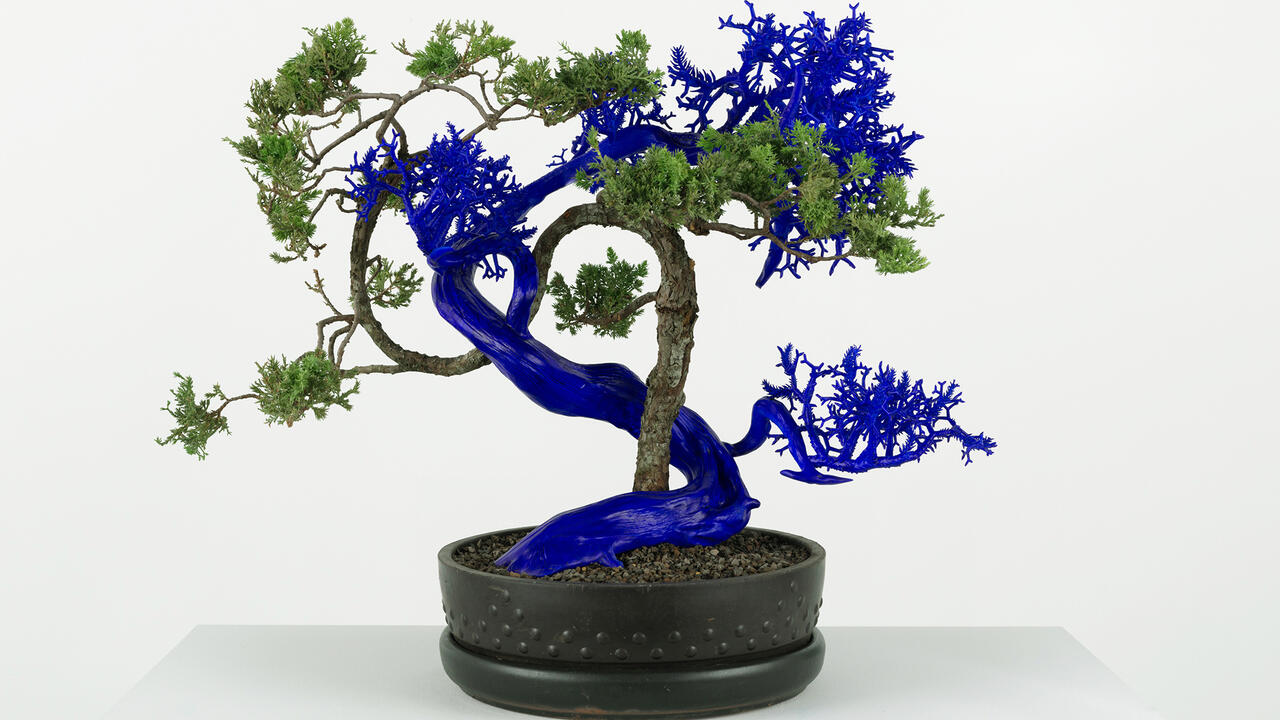Trisha Brown
Sikkema Jenkins & Co., New York, USA
Sikkema Jenkins & Co., New York, USA

Trisha Brown – maverick Postmodern dancer and visual artist – arrived in New York in 1961 and quickly became the city’s avant garde ‘It’ girl. In 1970 she founded the Trisha Brown Dance Company, which is still exploring intersections of dance, performance and art. Through repetitive, distilled movements, Brown pushes the limits of choreography: flirting with gravity, rigorously playing with physicality and collaborating with artists including Robert Rauschenberg and Vija Celmins. Brown is perhaps less known for the substantial body of works on paper she has also created over the last four decades. ‘I do the same thing in drawing as I do in dance’, she has said, ‘I’m not sure which came first.’
Her most recent, highly anticipated show followed an ambitious survey of her drawings (as well as early performances) at the Walker Art Center in the spring of 2008. Her show at Sikkema Jenkins & Co. included a careful selection of 55 drawings made between 1970 and 2008, a video documenting a 2008 performance piece at the Walker, and footage from dance performances from 1966–79. The exhibition opened with the artist’s early notational graphite, ink and coloured marker drawings from the 1970s, which depict not bodies in motion but serialized geometric variations and indicate Brown’s desire to impose a limiting framework upon herself. While these examples functioned as important schematic tools in her investigation of the body, their formulaic styling and minimal detailing convey no rhythmic fire and lack a formal elegance.
These tics mellow but don’t entirely disappear as Brown becomes more self-conscious and technically savvy. Since 2002, she has been working on an ongoing series of abstract drawings entitled ‘It’s a Draw’, which culminates in a dynamic display of swooping whorls and striking bands in the main gallery. Brown used paper roughly the size of her body and moved across it with charcoal and pastel held by her hands and feet – pivoting, rolling and skidding. When the work is paired with video documentation, as in this exhibition, you can cheat and assign the marks with their corresponding gestures. What developed initially within the framework of choreographic invention – using diagrams to document ideas – has at last shifted into a freewheeling and unhinged process for Brown that is suggestive of her artistic evolution, and, like her gutsy choreography, hopefully an indicator of greater risk-taking to come.
Brown is not the only artist out there trying her hand at a new medium to explore new approaches to choreography. The OpenEnded Group, a visual design team helmed by Marc Downie, Shelley Eshkar and Paul Kaiser, has created tantalizing, digital choreographic renderings using motion capture systems and real-time graphics for such visionaries as the late Merce Cunningham and Brown herself. By comparison, Brown’s work for a gallery is far less sophisticated especially when process is taken into account. It’s hard to see her improvisational forms of illustration as little more than a platform for technological advancement, calling attention to her partnership with OpenEnded as the promise of virtual choreography and the beginning stages of a new genre.
























